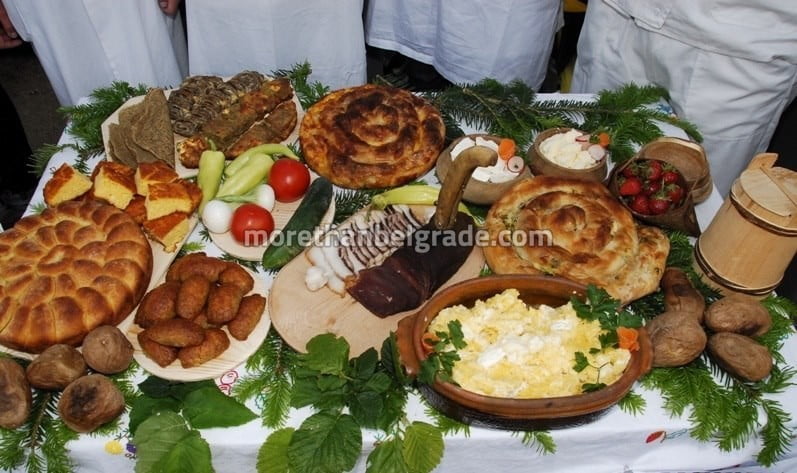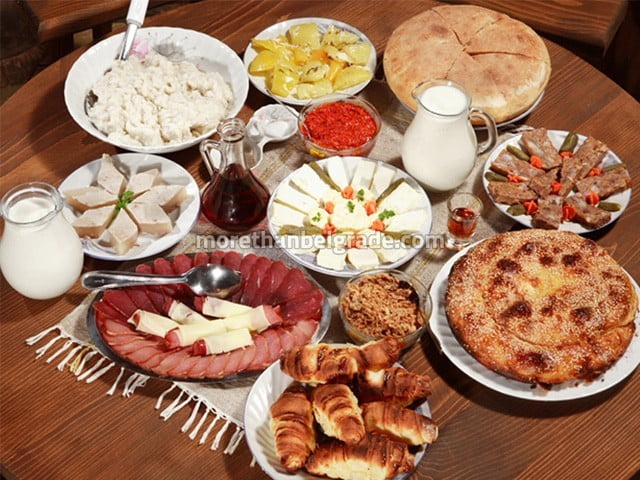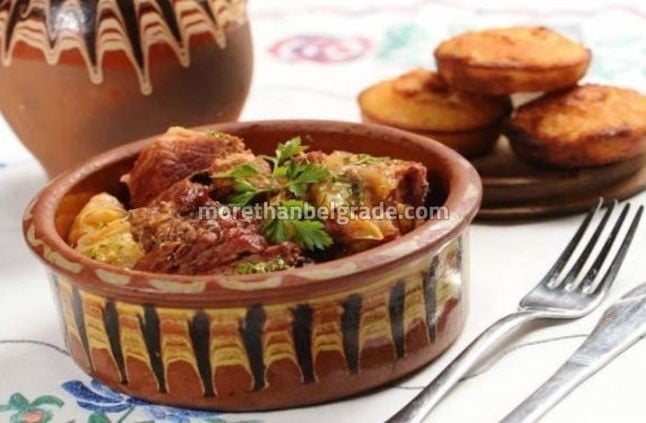
Serbian cuisine was created as a mixture of Greek, Bulgarian, Turkish and Hungarian cuisine. The effects on Serbian cuisine were indeed different and rich. One of the most popular dishes among Serbs is grilled meat or barbecue. Cevapi are not the original Serbian specialty, but they also took home in Serbian cuisine. In Serbia, they are prepared differently in relation to those in Bosnia or in Bulgaria, without lamb, exclusively from minced beef. Also, a ready-made kebab must be made in that way when dropping it from the table, bounce at least to the knees, which is a sign that the mixture for the kettle was well-embedded.

In Serbian cuisine, besides black pepper, red hot and sweet grated or crushed peppers, and parsley, almost no other herbs are used.
As autochthonous Serbian dishes we consider, for example, beef prosciutto and kajmak, ajvar and dishes like cicvara, sweet from roses. All the wealth of Serbian cuisine is best reflected in its geographical diversity.
In Vojvodina, a lot of pork and poultry meat is eaten, and since it is a meal, there are plenty of dough, bread and pasta.

Banat is best illustrated by international influences that in the past formed eating habits. Banat, on the one hand, was under a long German influence and eaten a lot of potatoes and pasta, and on the other hand, the proximity and influence of Hungary implied that the dishes were due to the use of cream (cream) sweet-sour (paparish, fried paprikaš) and rich meat.
And for cakes.. cakes were until the beginning of the 20th century only known.. in Banat.

One characteristic dish for Backo is Perket, a pungent goulash with pork.
For Sumadija are characteristic pies as well as meat with spit (piglet from spit).
Zlatibor and Zlatar are known for their dried meat and lamb meat.
And for sweet dishes …there was no cake… The only thing that sweetened the old Serbian was baked apple in the honey, as well as the juice of dried fruit.

Eastern serbia is known for salads of wild vegetables and herbs, especially (dandelion) with the taste of a similar ricolus, and various pies and, of course, lamb food. Vranje is the place of meeting of Macedonian – Kosovo cuisine, dense soups and cheeses prevail.

According to the border with Bulgaria, its influence on Serbian cuisine is felt, the dishes are rich in vegetables, peppers in a hundred ways (hot, peppers stuffed with potatoes). Kosovo and Metohija is a story for itself, who would say that an end to the rich monasteries can give guidelines to the kitchen, the priesthood lives modestly, from what it can give to the people. With this, they were able to make delicious fasting dishes, and the gods and a bit more hot delicacies, for example, baklava, pinjur (similar to ajvar, just with the addition of tomatoes), lamb and oven meals.

But yet.. a city in Serbia, introduced the glory of Serbian cuisine by cooking dishes on the grill, and thats Leskovac.
Contact us for the reservations in best serbian restaurants!
PHONE CALL, (Viber, WhatsApp) : +38160 434 66 22
E-Mail : office@www.morethanbelgrade.com